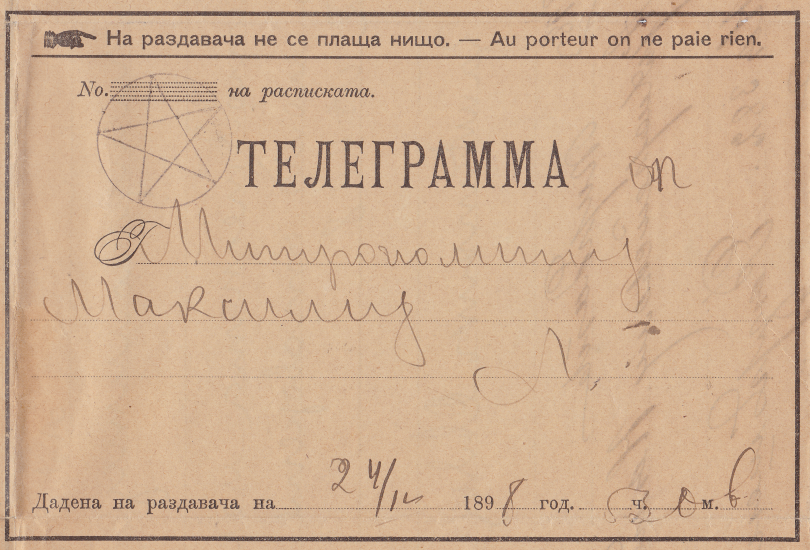| Up a level | |||||||||
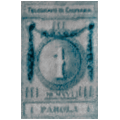 |
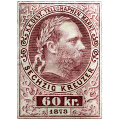 |
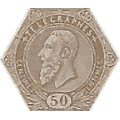 |
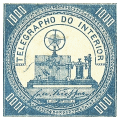 |
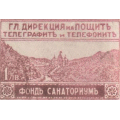 |
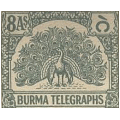 |
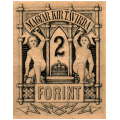 |
 |
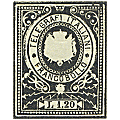 |
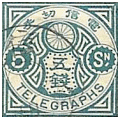 |
| Albania | Austria | Belgium | Brazil | Bulgaria | Burma | Hungary | Iran | Italy | Japan |
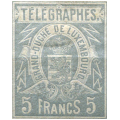 |
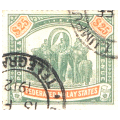 |
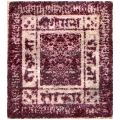 |
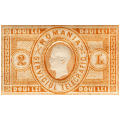 |
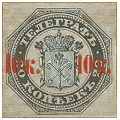 |
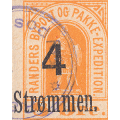 |
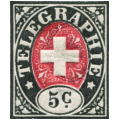 |
 |
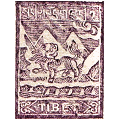 |
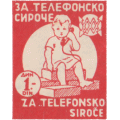 |
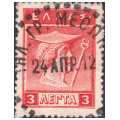 |
| Luxembourg | Malaya | Nepal | Rumania | Russia | Scandinavia | Switzerland | Thailand | Tibet | Yugoslavia | Miscellaneous |
Bulgaria.
Telegraphic use of postage stamps.
According to wiki :
The Principality of Bulgaria (Bulgarian: Княжество България, Knyazhestvo Balgariya) was a de facto independent,
and de jure vassal state under the suzerainty of the Ottoman Empire. It was established by the Treaty of Berlin in 1878.
Bulgaria became a Kingdom in 1909.

This is the top value stamp (1 Leva) of 1889, used until 1901, with a telegraph cancel - from RL.
The cancel is of the negative type, typical of the Ottoman Empire.
Telephone tickets
A couple of Telephone tickets illustrated at half my normal size:
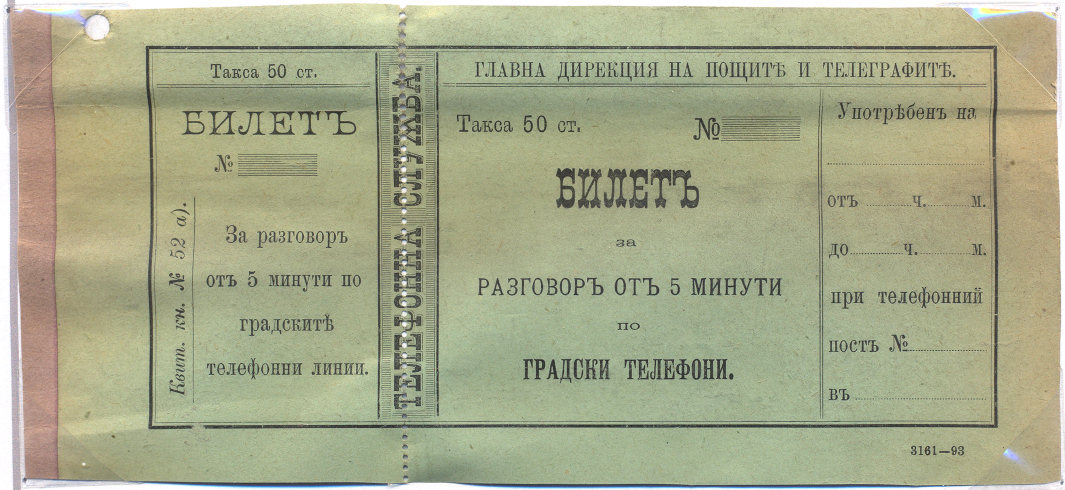
50 Stotinki green for 'Градски телефони', Urban telephone of 5 minutes - from RL.
The form number at bottom-right, suggests that this was printed in 1893.
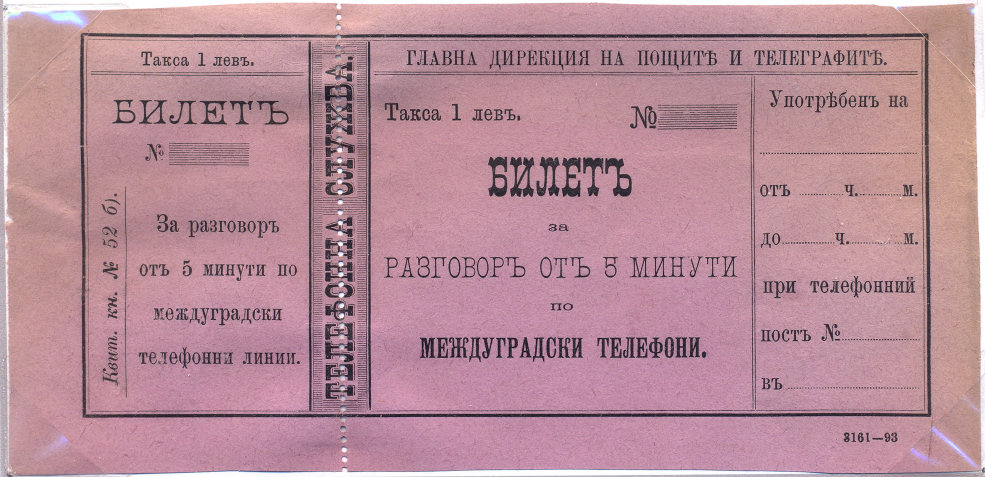
1 Leva pink for 'междуградски телефони', Intercity telephone of 5 minutes - from RL.
| RH# | Description | Mint | Used | Stub |
|---|---|---|---|---|
| RH-TP1 | 50 St green, for 5 minutes Urban | - | - | - |
| RH-TP1 | 1 L. pink, for 5 minutes Intercity | - | - | - |
PCP (Pour Certificat Postal)
Rolf Lamprecht has shown me an article written in German by Thomas Hitzler and Nikolay Penev, participants of
INTERNATIONAL PHILATELIC SALON “SOFIA 2013”, that goes into some detail about these items.
He also provided the images for this. I have not seen a description of these in English, so I offer my translation of parts taken from this:
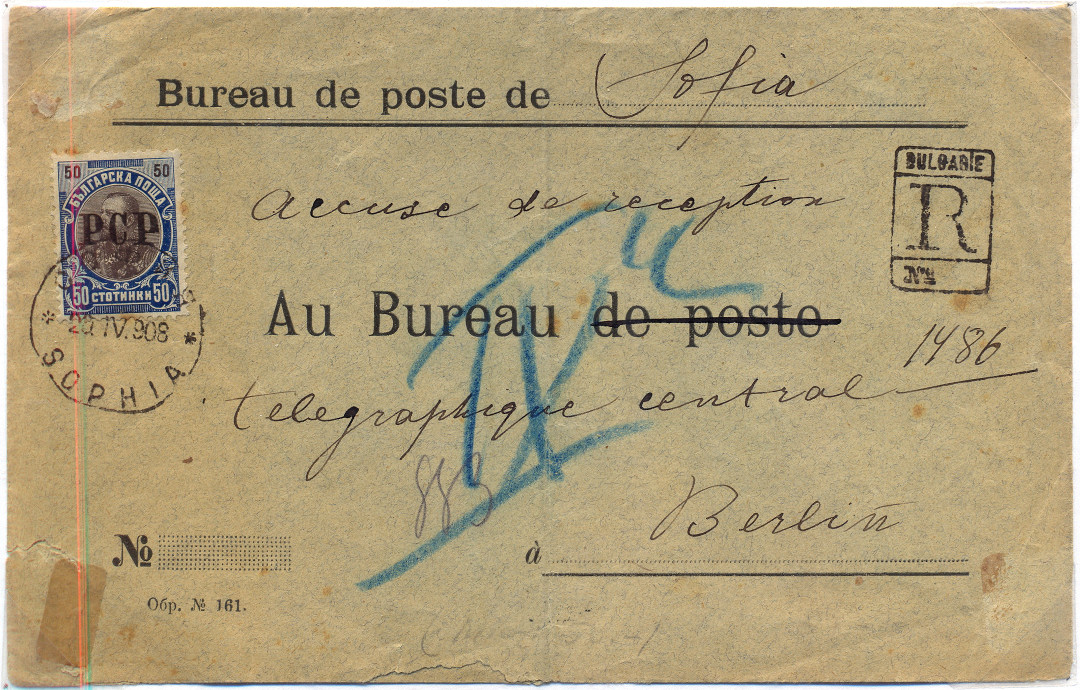
This is the third cover I have seen similar to this, all Registered, with the same type of stamp and cover printed entirely in French except for the Cyrillic form number.
This one, courtesy of Rolf Lamprecht, is dated April 1908. Another is dated 1905 and the last, with a capital 'P' in 'Poste', looks like 1909.
They are all from Sofia to Berlin. This is the only one with 'de poste' crossed out, but they all have a variation of Central Telegraphs written underneath,
the last having H. T. A (Haupt Telegraphen Amt) and the left end slit open and re-sealed with a Berlin postal seal.
Since writing the above I have seen more examples, most of which have 'de poste' crossed out. I have also seen scans of a couple of the
bilingual 'Извѣстие за получаване / Avis de reception's that were sent in these envelopes.
John Barefoot tells me that in the Capital (Sophia), the 'de poste' is deleted because there was an office there dedicated to telegrams only.
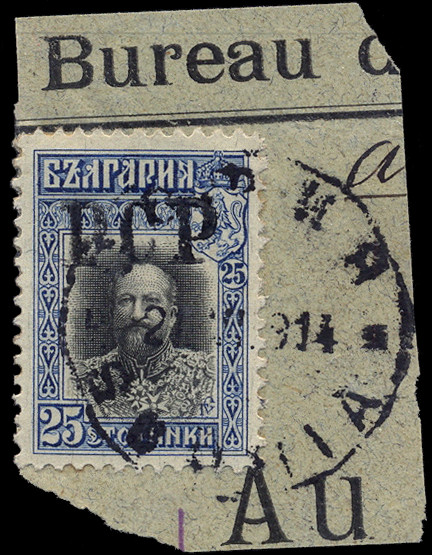
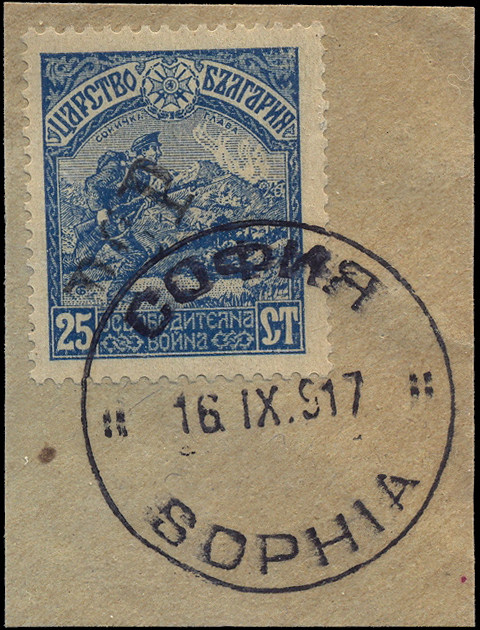
The one on the left appears to be from a similar cover dated 1914.
On the right is a different stamp with 'PCP' and different cancel, dated November 1917 on what looks like a different cover.
The difference may relate to the fact that France and Bulgaria were on different sides in World War I at that time.
These two images and the four below showing a range of the stamps bearing this overprint, come courtesy of Rolf Lamprecht.
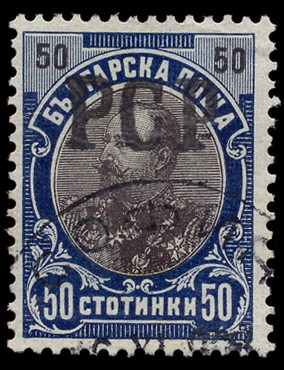 |
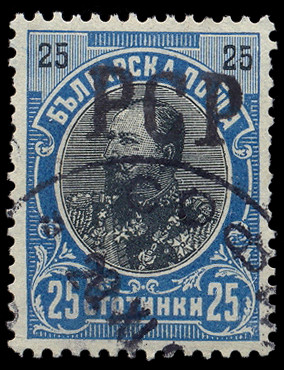 |
 |
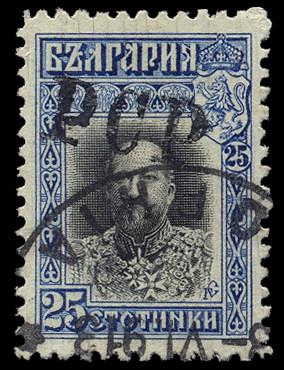 |
| 1905 - 50st (Mi# 58) | 1907 - 25st (Mi# 56) | 1909 - 25st (Mi# 70a) | 1911 - 25st (Mi# 84) |
I was surprised at the French influence displayed on these. I have Bulgarian telegrams from 1908 and 1912 which are entirely in Cyrillic characters,
so when I first saw 'PCP' I assumed that was Cyrillic too, but clearly not. The influence may be due to the aid provided by France in improving education in Bulgaria.
Table of stamp quantities overprinted 'PCP'.
| RH# | Michel # | Denomination | Issue Date | Production Qty | Mint | Used | On Doc. |
|---|---|---|---|---|---|---|---|
| RH-PCP1 | 56 | 25 Stot. | 1901 | 400 from 1906 onwards | 100.00 | - | 480.00 |
| RH-PCP2 | 58 | 50 Stot. | 1901 | 100 from 1906 onwards | 100.00 | - | 500.00 |
| RH-PCP3 | 70a | 25 on 30 Stot. | 1909 | 100 | 200.00 | - | - |
| RH-PCP3a | 70b | 200.00 | - | - | |||
| RH-PCP4 | 84 | 25 Stot. | 1911 | 400 | 100.00 | - | 600.00 |
| RH-PCP5 | 105 | 25 Stot. | 1915 | 600 | 100.00 | - | 600.00 |
| RH-PCP6 | 114 | 25 Stot. | 1917 | 400 | 50.00 | - | - |
Table of envelopes and forms that I have seen scans of.
| Date | Type | Denomination | Issue | Michel # | From | To | Source | Notes |
|---|---|---|---|---|---|---|---|---|
| Aug. 1905 | Envelope | 50 Stot. | 1901 | 58 | Sophia | Berlin | N. Penev | 'de poste' crossed out. |
| Sept. 1905 | Envelope | 50 Stot. | 1901 | 58 | Sophia | Berlin | eBay | 'de poste' not crossed out. |
| 1908 | Envelope | 50 Stot. | 1901 | 58 | Sophia | Berlin | R. Lamprecht | 'de poste' crossed out. 'accuse de reception / telegraphique central' |
| 1909 | Envelope | 50 Stot. | 1901 | 58 | Sophia | Berlin | Gaertnerauk | 'de Poste' not crossed out. 'H. T. A' + German seal |
| 13 Nov. 1911 | Envelope | 25Stot. | 1901 | 56 | Sophia | Berlin | N. Penev | 'de Poste' crossed out. 'Avis de réception / Telegraphique' |
| 25 Feb. 1913 | Envelope | 25 Stot. | 1911 | 84 | Sophia | Berlin | D. Feldman | 'poste' crossed out. 'Avis de réception / Telegraphique' |
| 1 Aug. 1916 | Form | 25 Stot. | 1911 | 84 | Sophia | Bucharest | eBay | For 'Legation de Roumanie' |
| 5 Aug. 1916 | Form | 25 Stot. | 1915 | 105 | Sophia | ? | eBay | Part form |
All of these envelopes went to Berlin (they were collected in East Germany). Considering the French influence, it would be surprising if none were sent to Paris.
Perhaps there are quantities there yet to be discovered.
Problems with authentication.
Whilst examples on a complete document would seem to be beyond suspicion, loose stamps, or even on small piece are not.
The overprint is applied with a rubber hand-stamp that leaves no trace on the back as with a metal stamp. A cancel can also be forged.
Mint stamps are a particular counterfeit risk. According to Nikolay Penev "there is currently no competent auditor for these overprints worldwide".
He trusts only Herm Karaivanoff. Having said all that, I bought one that was being offered on an auction site.
I show it here compared to the one above on a small piece:


Sanatorium Fund
According to the Scott Catalogue (under Postal Tax stamps), their numbers RA1 to RA18 were 'compulsory on letters etc., to be delivered on Sundays and holidays.
The money received from their sale was used toward maintaining a sanatorium for employees of the post, telegraph and telephone services.'
They do not explicitly say about telegraphs. This sounds similar to Iran so I will accordingly list them, though it may be that some were only used postally.
The Michel catalogue says "Sonntags zu bestellende Postsachen mußten diese Marken tragen." - "Postal goods to be ordered on Sundays had to carry these stamps."
This presumably would include the delivery of telegrams. As always it is for the collector to decide what to collect.
For those in doubt, there is an example below cancelled with "Телеграфна Кантора" (Telegraph Office).
They are all inscribed 'ФОНДЪ САНАТОРИУМЪ' (Sanatorium Fund).
1925-29 Typo. No watermark. Perf. 11½.
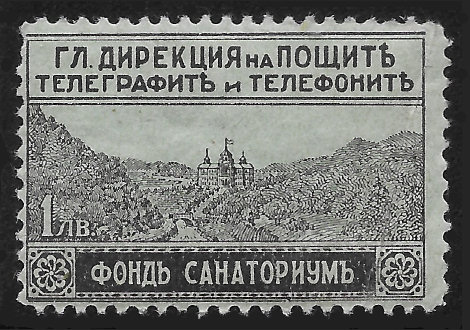 |
 |
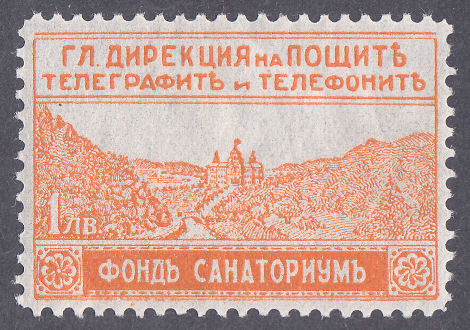 |
| Type 1 H1 - View of Sanatorium courtesy of Arkadiy Avrorov | Type 1 H2 - View of Sanatorium | Type 1 H3 - View of Sanatorium |
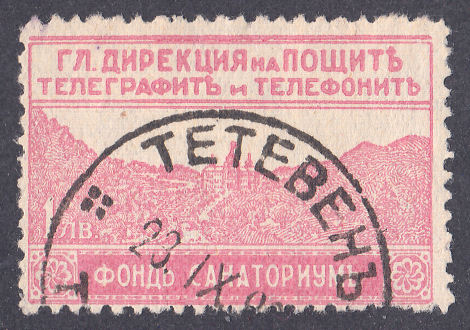 |
 |
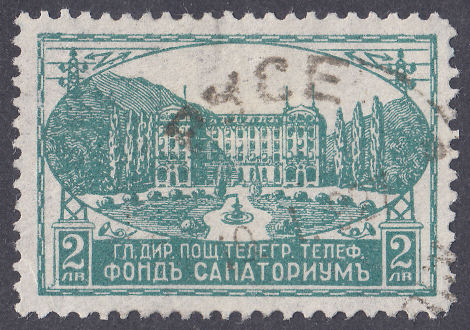 |
| Type 1 H4 - View of Sanatorium, used at Teteven. | Type 1 H5 - View of Sanatorium | Type 1 H6 - Sanatorium Peshtera |
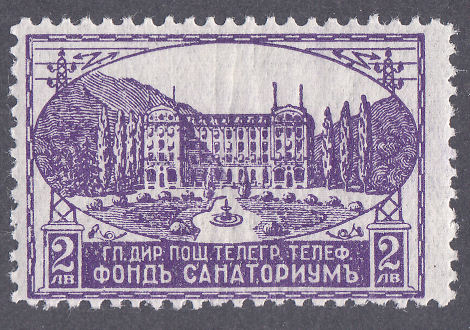 |
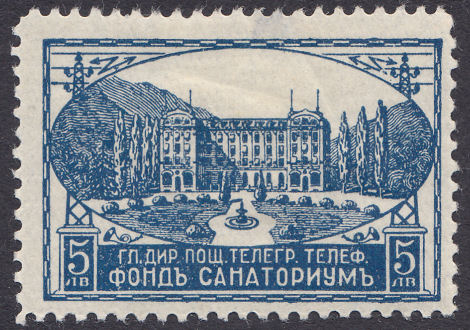 |
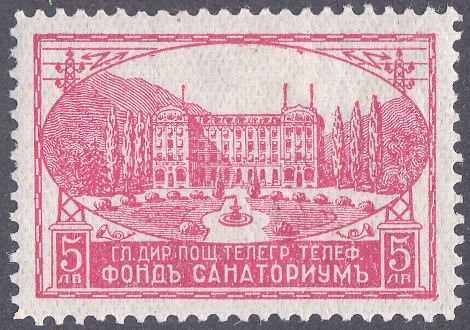 |
| Type 2 H7 - Sanatorium Peshtera | Type 2 H8 - Sanatorium Peshtera | Type 2 H9 - Sanatorium Peshtera |
1930-33 Typo. No watermark. Perf. 11½.
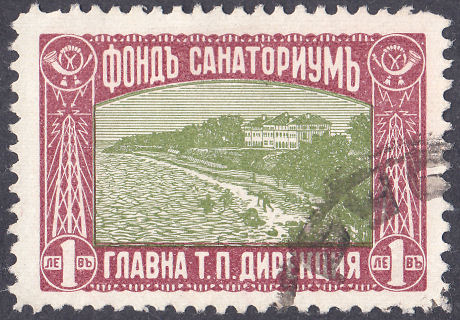 |
 |
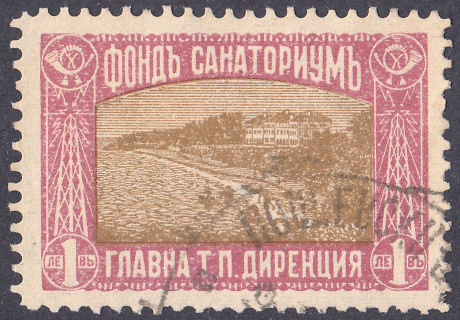 |
| Type 3 - St. Constantine Sanatorium - H10 | Type 3 - St. Constantine Sanatorium - H11 | Type 3 - St. Constantine Sanatorium - H12 |
| # | Type. | Description | Mint | Used |
|---|---|---|---|---|
| RH10 | 3 | 1 l. red-brown and olive-green | 4.00 | 0.20 |
| RH11 | 3 | 1 l. olive-green and yellow | 0.50 | 0.20 |
| RH12 | 3 | 1 l. red-violet and olive-brown | 0.50 | 0.20RH |
1935 Typo. No watermark. Perf. 11½.
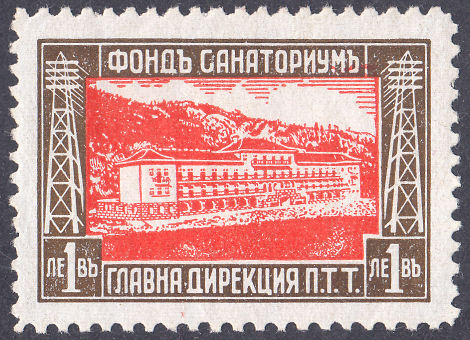 |
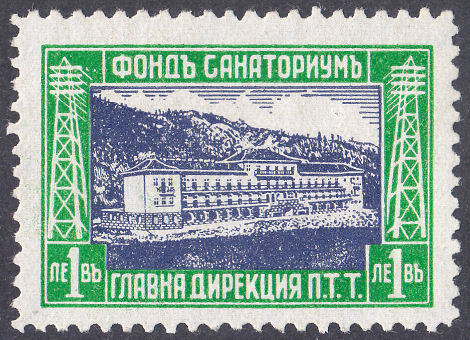 |
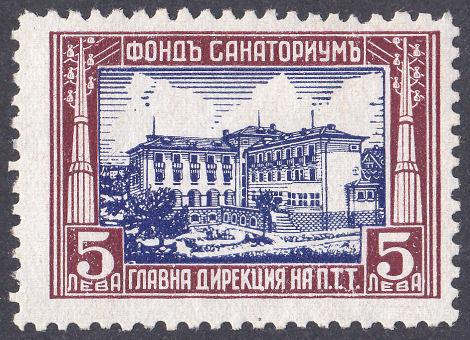 |
| Type 4 , Trojan Rest Home H13 | Type 4 , Trojan Rest Home H14 | Type 5 , Sanatorium H15 |
| RH# | Type. | Description | Mint | Used |
|---|---|---|---|---|
| RH13 | 4 | 1 l. chocolate and red-orange | 0.30 | 0.20 |
| RH13a | 4 | Perf. 11 | 0.30 | 0.20 |
| RH14 | 4 | 1 l. emerald and indigo | 0.30 | 0.20 |
| RH14a | 4 | Perf. 11 | 0.30 | 0.20 |
| RH15 | 5 | 5 l. red-brown and indigo | 1.40 | 0.35 |
| RH15a | 5 | Perf. 11 | 1.40 | 0.35 |
1941 Photo. No watermark. Perf. 13.
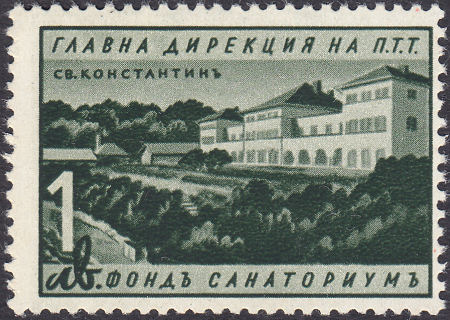 |
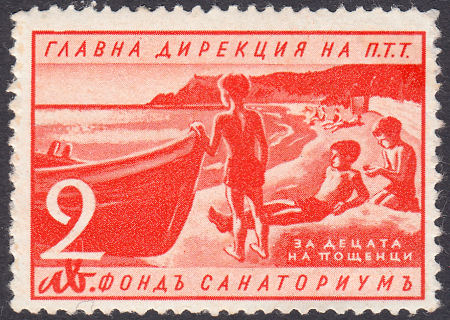 |
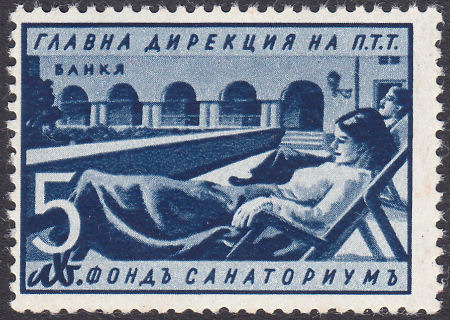 |
| Type 6 1 l. - St. Constantine Sanatorium. | Type 6 2 l. - Children at the seashore. | Type 6 5 l. - Rest home. |
| RH# | Type. | Description | Mint | Used |
|---|---|---|---|---|
| RH16 | 6 | 1 l. dark olive-green | 0.20 | 0.20 |
| RH17 | 6 | 2 l. red-orange | 0.20 | 0.20 |
| RH18 | 6 | 5 l. deep blue | 0.30 | 0.20 |
According to Scott, the same design, though smaller was also used for normal postage stamps (702-705).
They are valued similarly to the ones above.
1950 Typo. (Michel Nr. 19-22). Perf. 11½
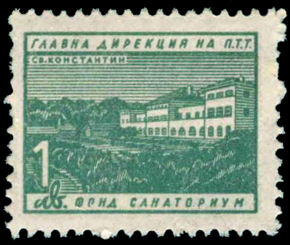 |
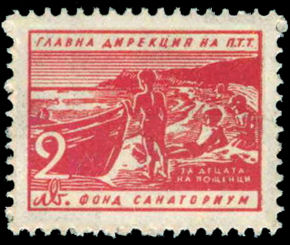 |
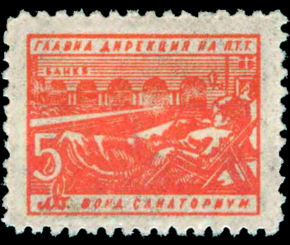 |
 |
| 1 l. - St. Constantine Sanatorium. | 2 l. - Children at the seashore. | 5 l. - Rest home. | 10 l. - Children at the seashore. |
| Description |
|---|
| 1 l. blue-green |
| 2 l. red |
| 5 l. orange |
| 10 l. blue |
Stationery.
| Shortcuts to other sections | ||||
| Delivery Forms #51 | Delivery Forms #51a | Delivery Forms #51b | Delivery Forms #1 | Delivery Forms #851 |
Telegraph Receipts
A range of receipts, all from RL.
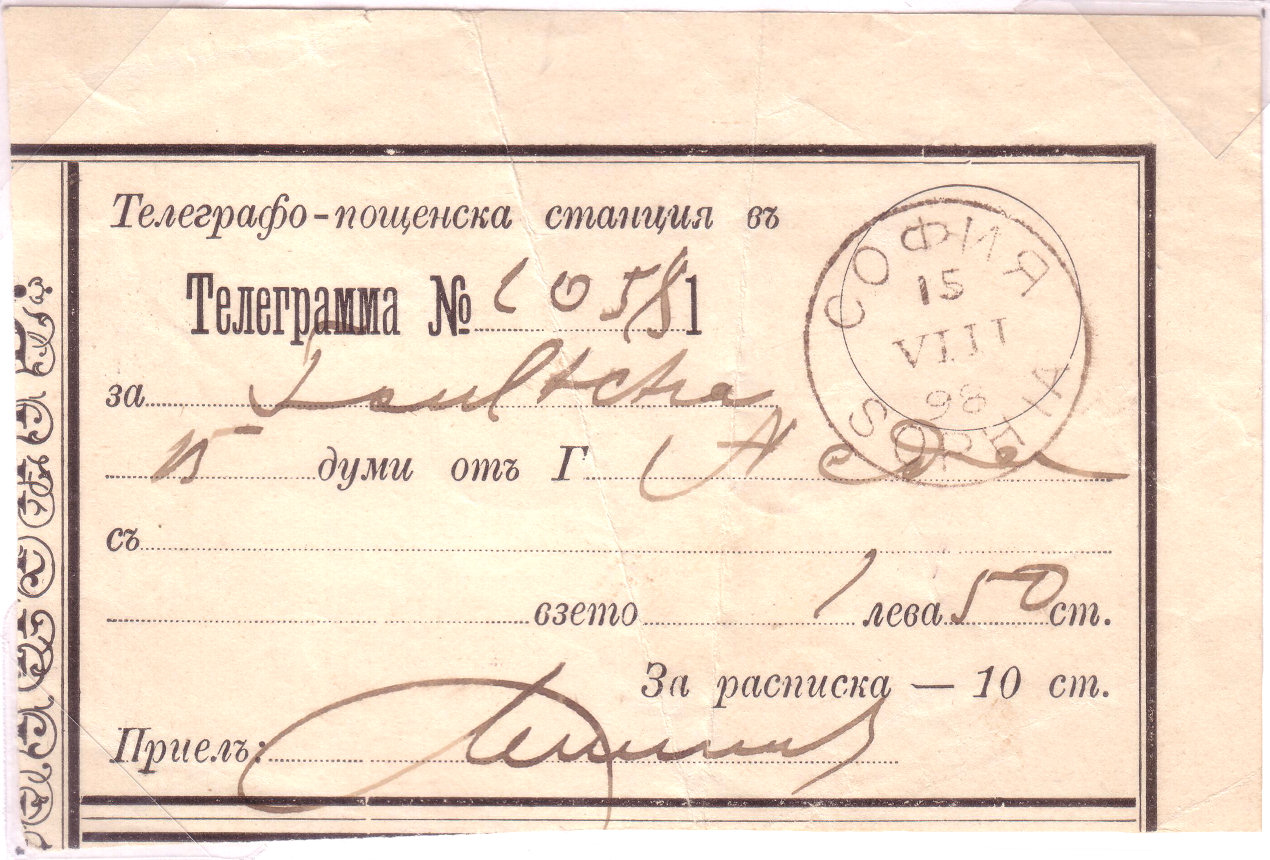
Sophia, August 1898. Note, the '10 cm' at bottom right is lower-case Cyrillic for 10 st, short for 10 stotinki.
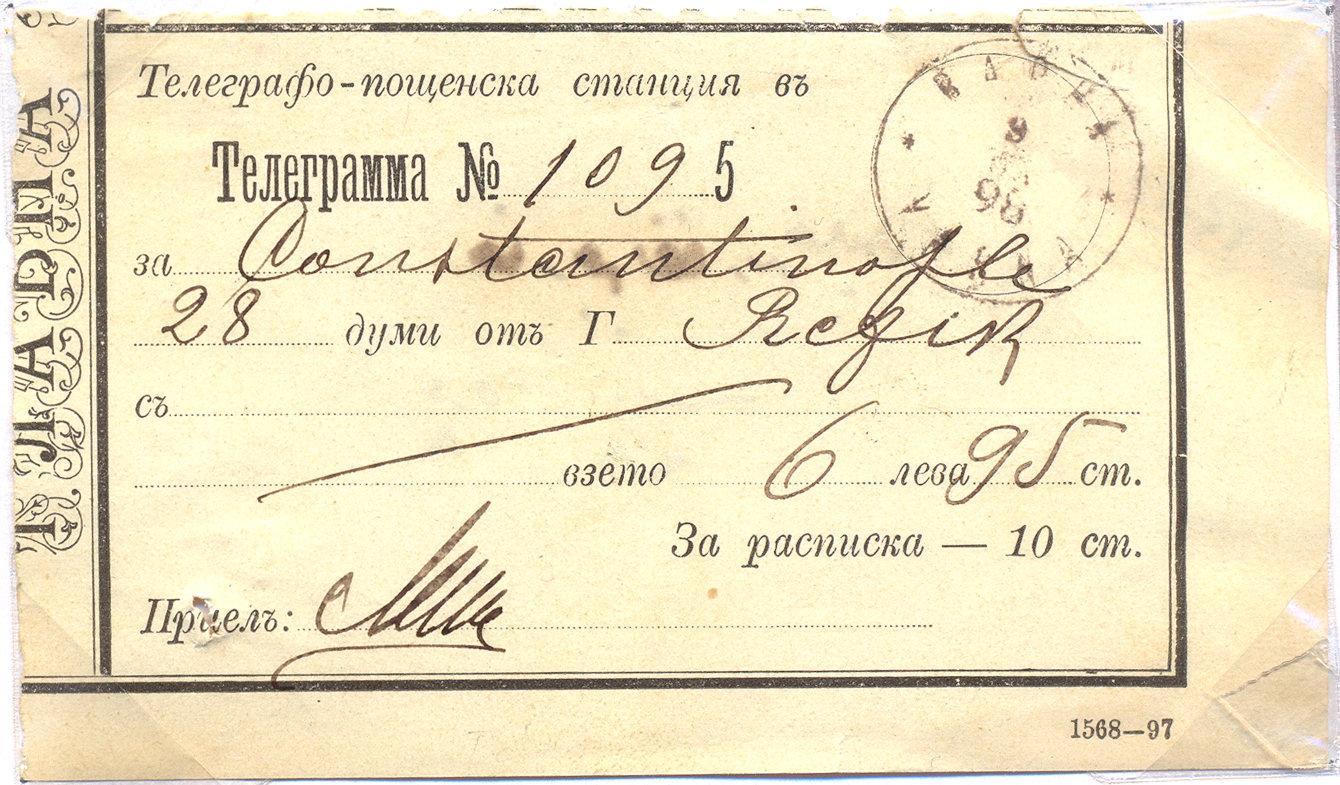
Varna, on the Black Sea, to Constantinople, 1898.
Note the form number in the bottom -right corner, these were probably printed in 1897.
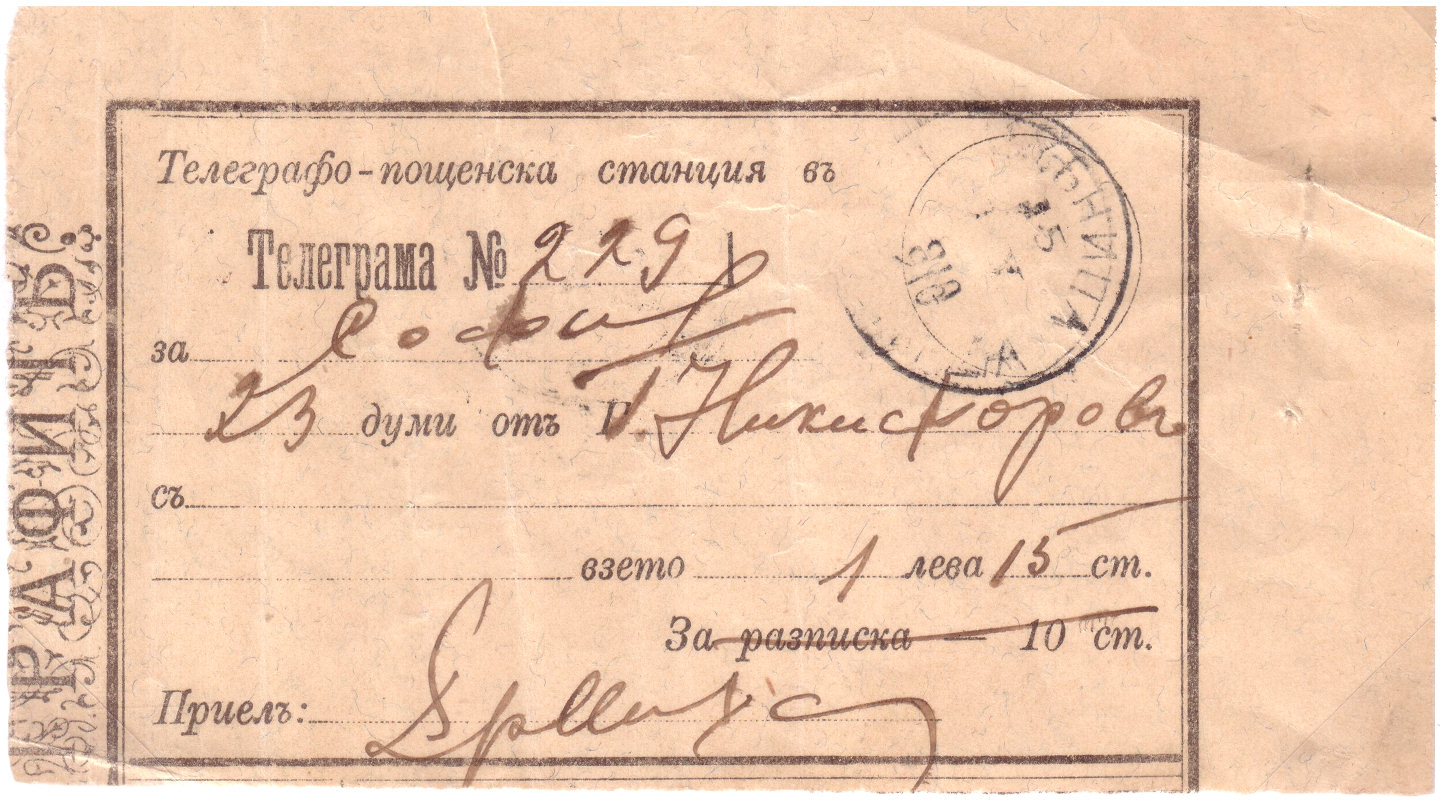
Dupnitsa, 15 April 1910. The left edge is like the early French type with an inscription up a vertical strip.
Telegrams.
No. 51.
Not yet marked with a Form Number. These date from 1884 or earlier. There is space for the date on the front at top-left and under the address on the back.
The front has " КНЯЖЕСВО БЪЛГАРiЯ " (Principality of Bulgaria) over the Coat of Arms. This is dated 5 October 1884.

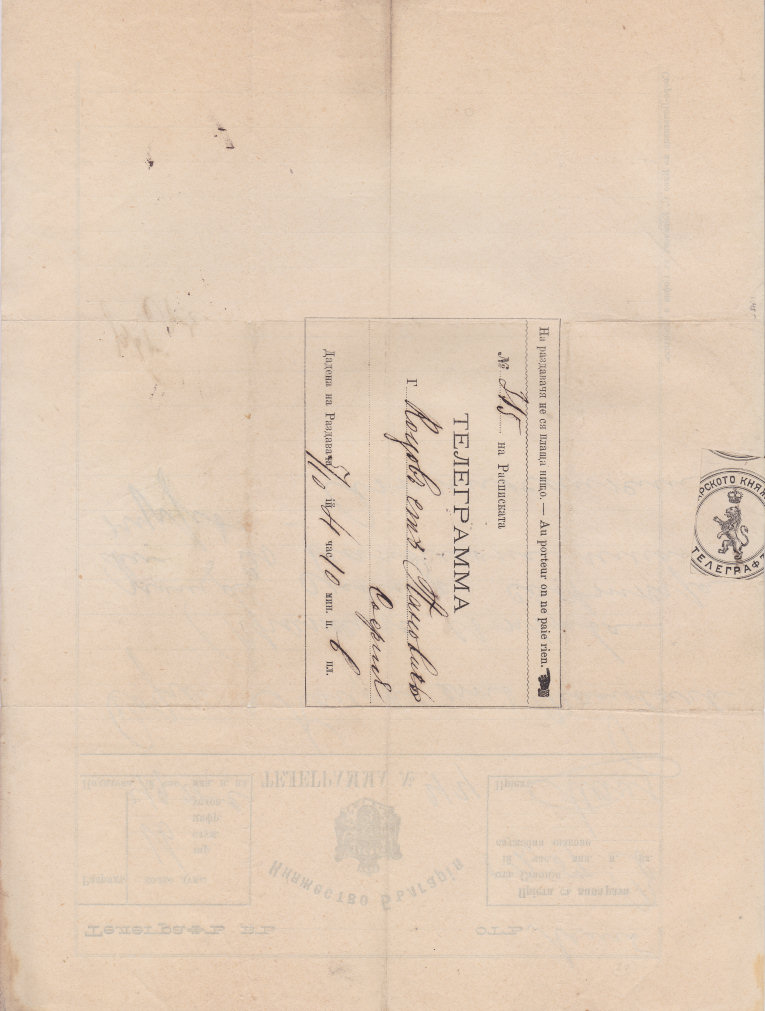
The front has an imprint up the bottom-right side reading "Скоро-Печатница на Янко С. Ковачевъ въ София и Пловдивъ." (Soon-Printing House of Yanko S. Kovachev in Sofia and Plovdiv.).

Many changes at the top. Now Form Number 51, style changes and a change to the Coat of Arms.
This is dated 11 March 1887.


The imprint is now horizontal, reading "Държ[ава] Печатница. — Стереот." (State Printing Office — Stereo.).

The top is the same except year prefilled as "189..." rather than "188...". The back has a similar change.
This is dated 30 October 1894.

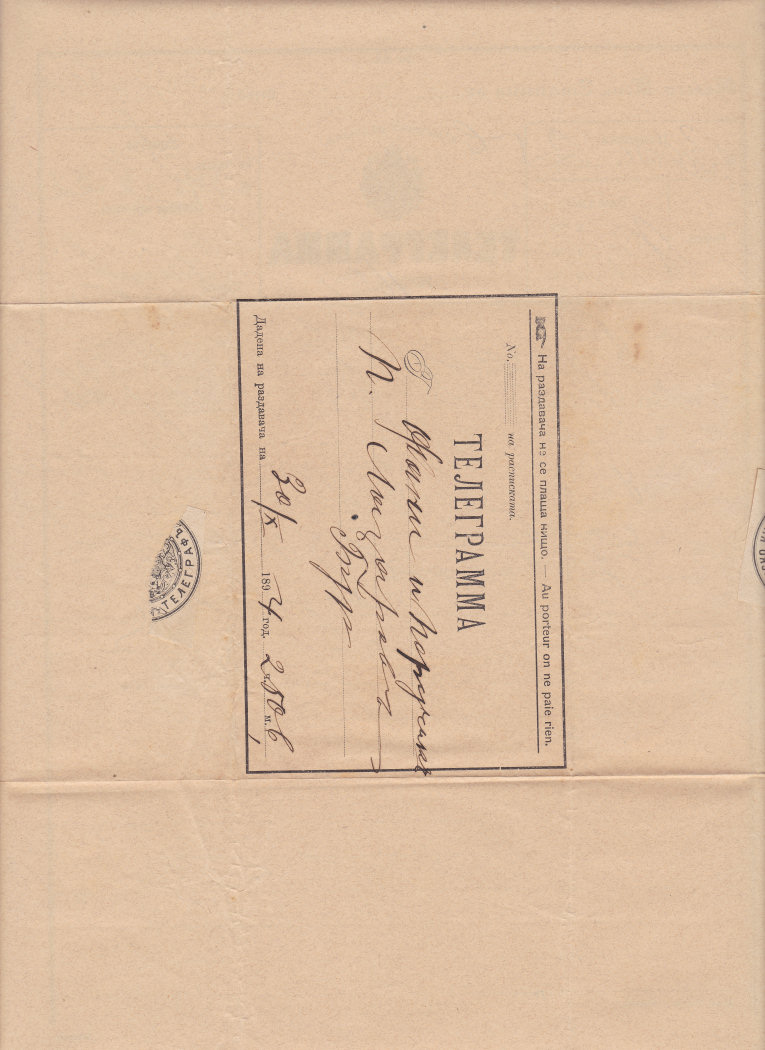
Now two imprints, the first with little change, reading "Държ[ава] Печатн[ица]. — Стереот." (State Printing Office — Stereo.). The new imprint on the right includes the year "93".
 . . . . . .
. . . . . .

Form 51 a ?
Used 4 March 1908 in Sofia.
This is clearly different from the last type. It is single sided and was presumably delivered in an envelope.
Unless there was a form number in the torn-off bottom corner, it was not marked with a form number or imprint.
For reference purposes, I will call it Form 51a. - Note the pentagram at the top, it could not have been a postal marking.

Form 51 b ?
Used in 1912.
This is headed "Телефонограма" (Telephone messages), so is clearly different from the last type.
It is single sided and was presumably delivered in an envelope. There is no form number or imprint.
For reference purposes, I will call it Form 51b. - Again, note the pentagram at the top, that could not have been a postal marking.

Form No. 1
Used in Plovdiv, 20 November 1940.
This is delivering a selected congradulatory type message through the post without envelope.
As such it is a very different usage. There is a "No 1" near the top.
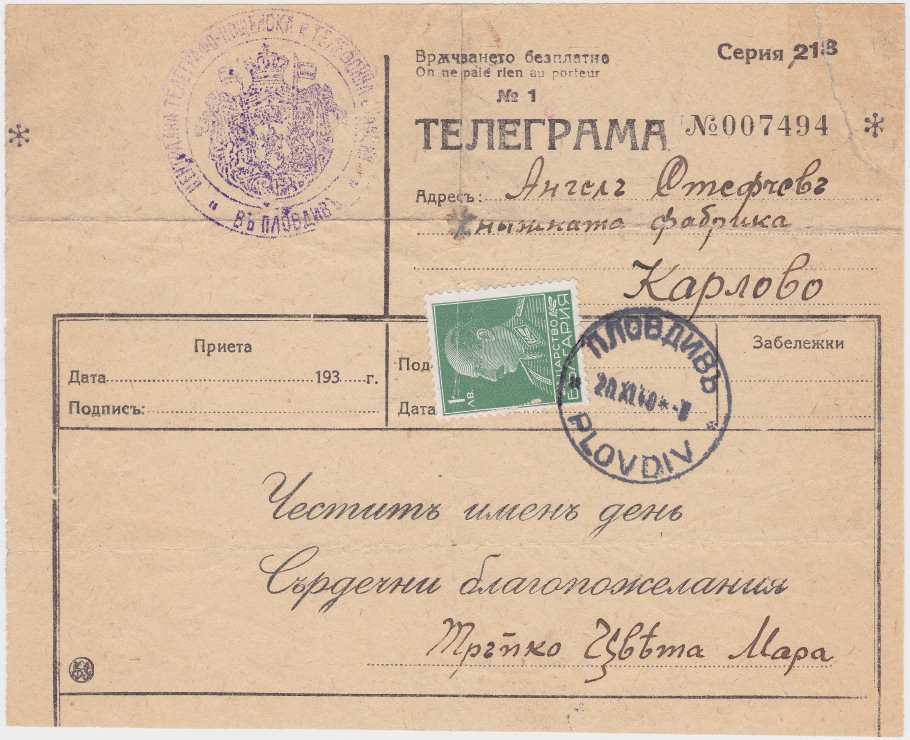
At bottom-left, in place of an imprint is a Logo of a Rampant Lion

Form No. 851
Used 13 April 1942
This is says at the top "No 851 (старъ No 51)" or "No. 851 (old No. 51)".
This both provides a form number and acknowledges that No 51 was still valid until then.
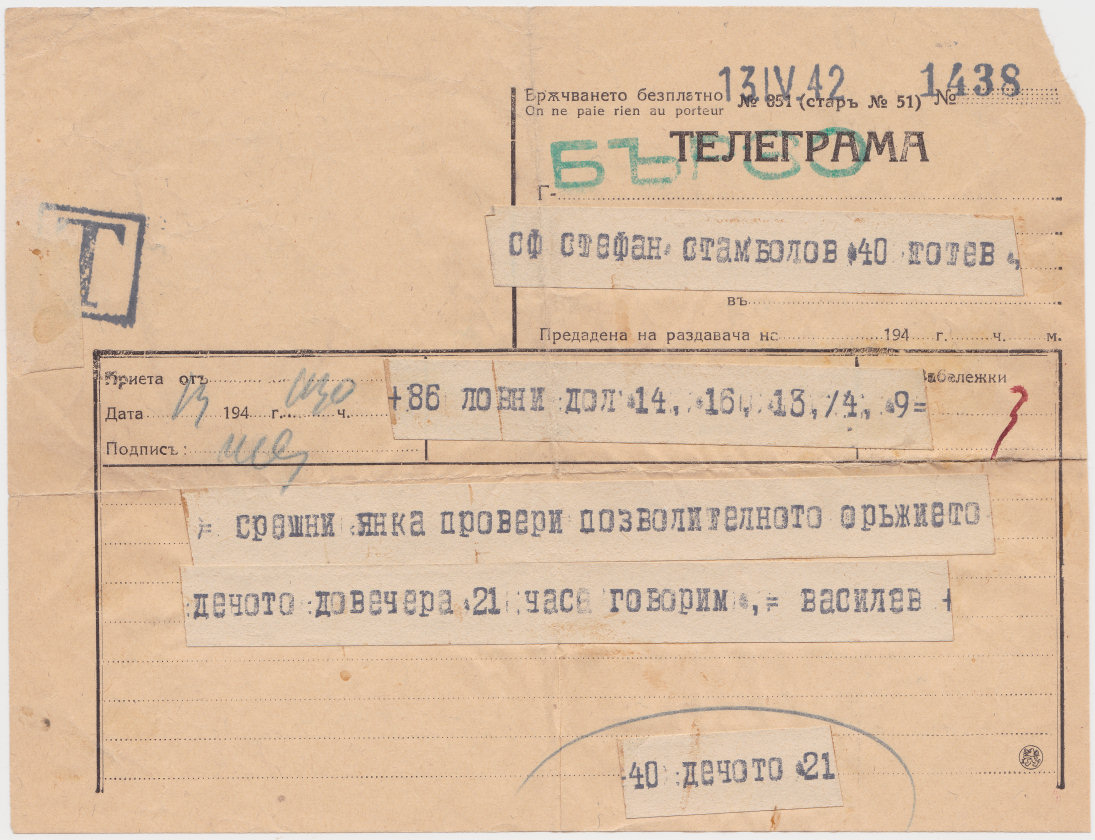
At bottom-right, in place of an imprint is a clearer Logo of the Rampant Lion
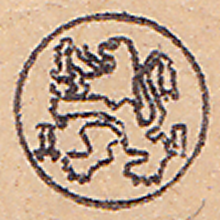
Telegram Seals.

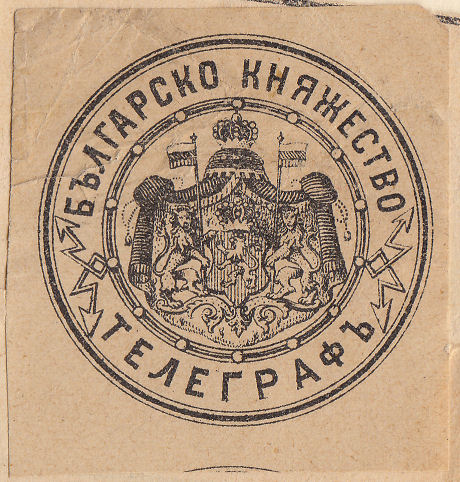
I have only seen two types. The first dates from 1884 or earlier and is quite rare, I only know of this badly trimmed one.
The other is only scarce and I have seen examples in the range 1888 to 1900.
If anyone can provide scans to help with this, I am happy to give appropriate credit.


